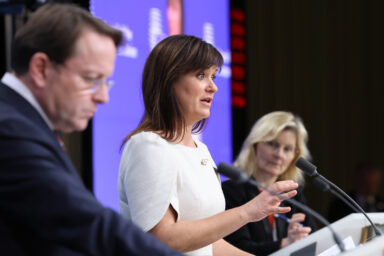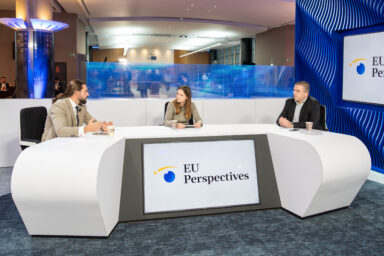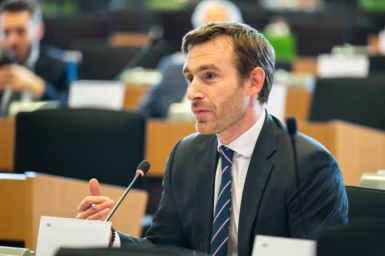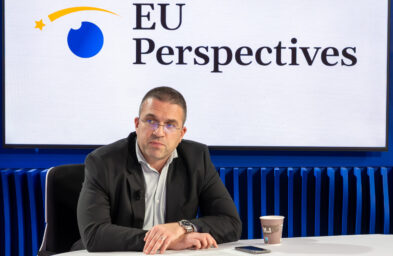EU member states took a major step toward deeper defence integration by signing off on one of the bloc’s most ambitious joint procurement plans to date. Just two months after the Commission proposal, the Council adopted the Security Action for Europe (SAFE) instrument, loan facility worth up to €150bn to co-finance large-scale defence projects involving multiple EU countries.
European Council President António Costa hailed the instrument “an important step toward a stronger Europe,” with the dual goal of boosting both security and industrial competitiveness. Polish Minister for EU Affairs Adam Szłapka, speaking on behalf of the Council presidency added: “It is an unprecedented instrument that will boost our defence capabilities and support our defence industry. The more we invest in our security and defence, the better we deter those who wish us harm.”
SAFE is part of the European Commission’s wider three-part package. It sits alongside a temporary activation of the National Escape Clause (NEC), which allows countries to exclude up to 1.5 per cent of GDP for defence spending between 2025 and 2029 from the budget deficit limit of three per cent of GDP. The third element is a White Paper for European Defence, which lays out a five-year roadmap for EU defence strategy, with proposals to plug capability gaps and boost Europe’s strategic autonomy.
Financial architecture of SAFE
The instrument offers member states long-term loans of up to 45 years, with a 10-year grace period before repayments begin. Because of the EU’s top-tier credit rating and strong demand for EU-issued bonds, borrowing through SAFE is expected to be more attractive and affordable than individual countries would be able to obtain alone. Countries can receive up to 15 per cent of their funding upfront as early as 2025, allowing for immediate action on the most urgent needs.
SAFE is an unprecedented instrument that will boost our defence capabilities and support our defence industry – Adam Szłapka, Polish Minister for EU Affairs
Eligible defence products fall into two groups. The first includes traditional military equipment such as ammunition, artillery, infantry gear, cyber defence tools, and systems that enhance military mobility. The second, more advanced category includes missile defence systems, naval vessels, drones, and artificial intelligence technologies used in modern warfare. Projects in this second group face stricter eligibility conditions to ensure Europe retains control over key technologies.
To qualify for SAFE funding, at least 65 per cent of every system’s components must come from EU member states. Ukraine and EEA/EFTA countries (Iceland, Liechtenstein, Norway, and Switzerland) will also be treated as member states. Additionally, SAFE also allows third countries to join joint procurements under special agreements with that country. Last month, the EU also signed a security and defence partnership with the UK, allowing it to partake in the common procurements as well.
You might be interested
Non-European components must not exceed 35 per cent of the total cost. Moreover, each project must involve at least three countries to reduce fragmentation and promote joint procurement.
Industrial competitiveness in focus
SAFE is further designed a strategic bet on Europe’s industrial competitiveness. By combining demand across member states and encouraging joint efforts, the EU hopes to cut down on inefficiencies, support cross-border innovation, and create a predictable pipeline of large contracts that spur research and development.
The industry has responded positively. The Aerospace, Security and Defence Industries Association of Europe (ASD) welcomed the fund, stressing the need to channel investments into European-made components to maximise the economic impact. Between 2022 and 2023, no more than 22 per cent of defence procurement went to European products.
Market reactions suggest growing confidence: the Stoxx Europe Aerospace and Defence Index jumped by more than 30 per cent in the first quarter of 2025, according to Deutsche Bank. While recent global trade tensions have introduced some volatility, the sector is still likely to outperform. Forecasts point to earnings growth of around 20 per cent for 2025–2026 and over 15 per cent for 2027.
In the meantime, the European defence industry has already been expanding. In 2023, turnover rose to €158.8bn, an increase of nearly 17 per cent year-on-year, with strong growth across land, naval, and aeronautics sectors.
Taboo on defence investments weakening
This momentum also reflects shifting attitudes among investors. Traditionally, many asset managers excluded weapons manufacturers from their portfolios, often citing ethical or sustainability concerns. But the taboo is weakening. Several major financial institutions, such as Danske Bank, Swiss UBS, and Belgian Belfius, have begun loosening these restrictions.
“We’ve seen a noticeable shift among our clients when it comes to investing in defence,” said Erik Eliasson, Head of Responsible Investing at Danske Bank Asset Management, in an interview with the Dutch financial daily FD. Denmark’s largest bank has adjusted its exclusion policy for regular, non-sustainable funds to allow investment in defence companies. Swiss bank UBS and German insurer Allianz have gone a step further, opening the door to select defence stocks in their sustainable portfolios.
Bypassing the Parliament stirs political controversy
The way SAFE came into being stirred some political controversy. The European Commission bypassed the European Parliament by invoking an emergency legislative procedure in order to accelerate the process. This move sparked criticism from Parliament, whose Legal Affairs Committee voted to take legal action against the Council last week.
MEP Ana Catarina Mendes (S&D/PT), her faction’s vice-president for Strong Democracy and Rule of Law, said: “This is just one example among many of how the Commission is pulling out all the stops to undermine the Parliament’s rights and duties. Let’s be clear, the S&Ds have always advocated for a unified Defence Union that would include increased investment in European defence industries and infrastructure, and a single market for defence. In that sense, the proposed €150 billion in loans in the SAFE regulations are a step in the right direction. But this cannot be done neither to the detriment of our democratic system nor putting into question our European institutional balance. In these times of uncertainty and geopolitical threats, our citizens need us to show unity, not a power game at the mercy of certain partisan interests.”
Despite the ongoing legal process, implementation is moving forward. EU countries now have time until 29 November to submit their national plans outlining how they intend to use SAFE funds.











